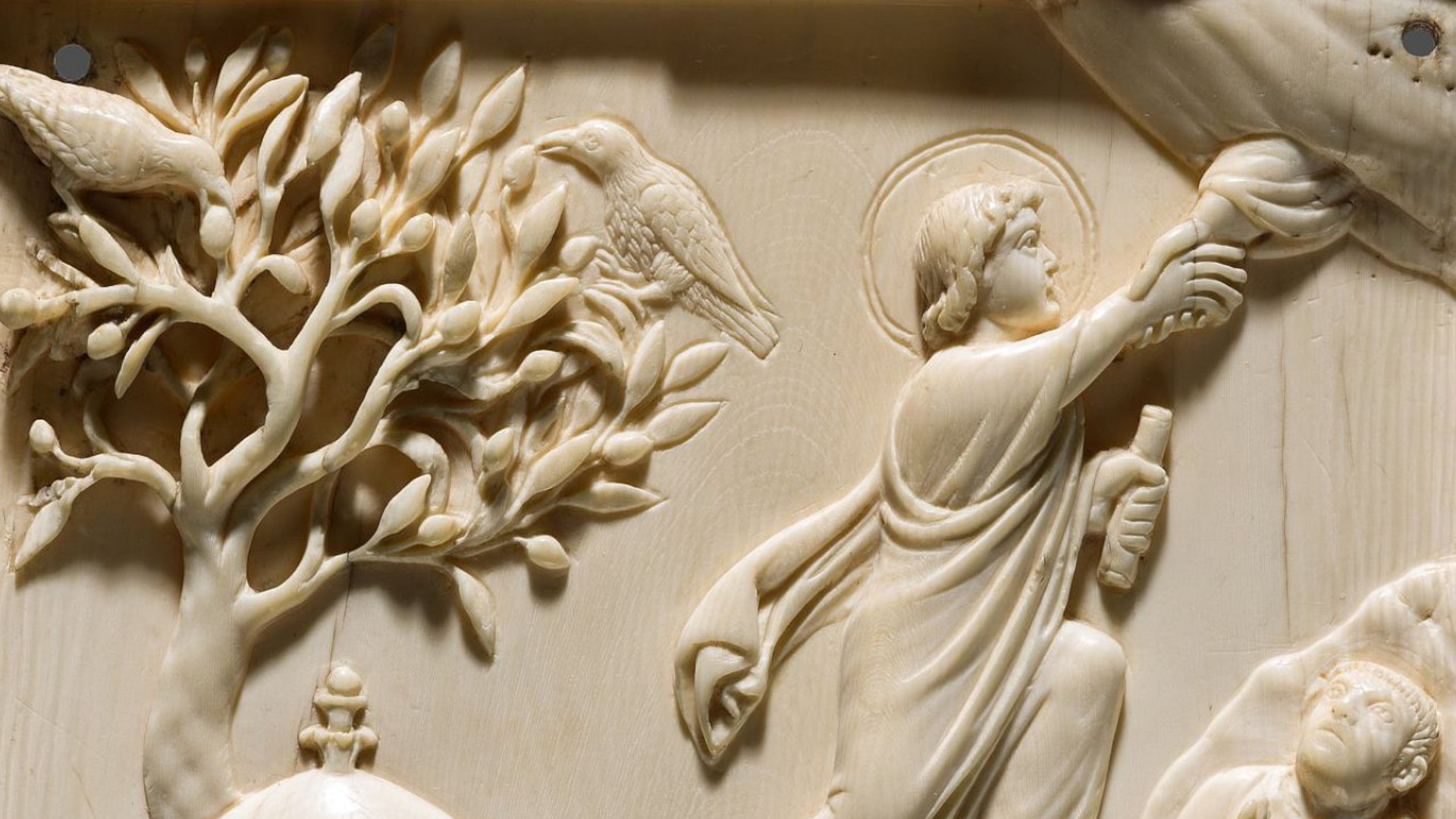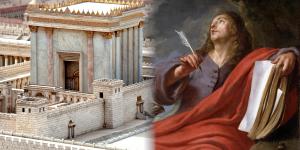You are here
How Are Faithfulness and Grace Connected to the Right Hand of Fellowship?

Galatians 2:9
The Know
When recounting to the new members of the Church in Galatia the recent events of a general leadership conference of the Church held in Jerusalem, Paul mentions that “James, Cephas, and John, who seemed to be pillars” perceived that Paul—a former persecutor of the Church—had truly received grace from the Lord. Because of this, they gave Paul and Barnabas “the right hands of fellowship,” preparatory to their mission to preach to the Gentiles (Galatians 2:9).1 In addition to linking this concept with grace, Paul moves on to discuss how he now lives “by the faith of the Son of God,” closely linking his receipt of grace with his reciprocal faithfulness.2
The symbol Paul used of “the right hands of fellowship” would have been familiar to an ancient audience in the context of connecting grace and faith. This would be especially true for Paul’s Greco-Roman audience, who viewed faith (pistis in Greek and fides in Latin) in a high regard—even worshipping a goddess by that same name.
Interestingly, Brent J. Schmidt has recently noted that the goddesses Pistis and Fides were both connected with the use of ritual right handclasps in Greco-Roman culture and religion.3 According to Roman legend, Fides established Rome through “reconciliation, peace, and unity” using “balanced means, oaths, and institutions” in contrast to the violent Romulus.4 Fides and Pistis became so honored that they were seen by some to equal Zeus in power and authority.5 These Hellenistic covenantal communities utilized a right handclasp to represent these same means whereby Fides established Rome, seeing this ritual action to be a fitting action or “symbol” for “unity, reconciliation, and becoming god-like.”6
This ritual handclasp, connected with Fides, ultimately would be seen as “a link of devotion connecting the human and divine.”7 As seen in many surviving classical sculptures, a handclasp was also similarly employed in marriage ceremonies with included the hope that the husband and wife would be reunited in the afterlife.8 It was also used in temples in connection with making covenants, each with a related oath and curse for those who broke their promises to the gods.9
Similar mentions of a right handclasp are found throughout the Bible in the Old and New Testaments. Throughout the Psalms, for instance, the king and psalmist describe taking the Lord by the right hand in His temple.10 This is done as power and authority are given to the temple petitioner, or the petitioner is raised into the presence of the Lord. These symbols have been studied by many Latter-day Saints, including Hugh Nibley, Stephen D. Ricks, David Rolph Seely, and David Calabro, demonstrating how the right handclasp was an authentic and original aspect of Israelite temple worship.11
Such a ritual handclasp was continued in early Christianity, which relied heavily on the Israelite temple and its Great High Priest, Jesus Christ. For instance, a handclasp was used by the Apostle Peter as he healed a lame man at the gates of the temple “in the name of Jesus Christ of Nazareth” (Acts 3:6–7). John used Jesus’s right hand throughout Revelation as a symbol for people’s faithful relationship with Him,12 and early Christian writings and traditions linked this handclasp with Jesus leading the righteous souls from the dead.13
Early Christian art likewise depicted righteous saints ascending into heaven by taking the Lord by the right hand, having extended His hand through a heavenly veil.14 Christian tradition also depicted marriages using this same handclasp: for example, a fifth-century mosaic depicts “the wedding of Moses and Zipporah” in which Jethro, the high priest, brings the two together as the “bride and groom clasp right hands.”15
The blessings received in this ritual right handclasp are given through God’s grace to all who are true and faithful to their covenants. By closely connecting “the right hands of fellowship” with the concepts of faith (pistis) and grace (charis), Paul’s audience would have been able to better understand the significance of such an authority-giving ritual event as well as other correct ordinances of the Gospel that had been closely mirrored through their previous religious traditions.
The Why
Having received any gift from a superior person, all people living in the world of the New Testament naturally felt bound and obligated to the one who bestowed the favor. They reciprocated that favor by being faithful and loyal to that person. Thus, the Greek word pistis (faith) was deeply connected with ideas of faithfulness, unity, and reconciliation. And as a right handclasp had been used in connection with expressions of pistis in both the Greco-Roman and Jewish religious traditions, this word readily conveyed a whole new set of meanings within the early Christian church and still today: fully faithful and loyal members would be given power and authority to become like God, enter into His presence, and enjoy the blessings of an eternal family through the ordinances of the temple, including this ritual handclasp.16
The handclasp could be employed between two parties to enter into a mutually beneficial relationship, similar to how a firm handshake still today expresses unity and mutual support among all those who labor together in Zion. This is perhaps seen in the mention of right hand of fellowship by Paul. As Paul and Barnabas were given the power and authority to spread the Gospel to the Gentiles, Peter, James, and John took their mission to the areas still surrounding Jerusalem and Israel. Each mission would benefit each other and the entire Church as a whole.
Paul’s audience, who were already familiar with how a right handclasp could unite people together and to the divine, would have found in Christian ordinances a true pattern that they had only known, as it were, “through a glass, darkly” (1 Corinthians 13:12). Having been introduced to the Gospel of Jesus Christ, been baptized and made covenants with the Lord, they and we experience the true blessings of embracing the right hand of fellowship in and through the grace of Jesus Christ.
The Lord has declared through Joseph Smith that “in the ordinances [of the kingdom of God], the power of godliness is manifest” (Doctrine and Covenants 84:20). As we serve the Lord and make covenants with Him, we can be blessed with this knowledge that we will be secure in His love and one day enter His presence once more, never again to leave.
Further Reading
Brent J. Schmidt, Relational Faith: The Transformation and Restoration of Pistis as Knowledge, Trust, Confidence, and Covenantal Faithfulness (Provo, UT: BYU Studies, 2022), 87–118.
Hugh Nibley, The Message of the Joseph Smith Papyri: An Egyptian Endowment (Provo, UT: FARMS; Salt Lake City, UT: Deseret Book, 2005), 427–457.
Hugh Nibley, “Apocryphal Writings and the Teachings of the Dead Sea Scrolls,” in Temple and Cosmos: Beyond this Ignorant Present (Provo, UT: FARMS; Salt Lake City, UT: Deseret Book, 1992), 264–335.
- 1. For more information on the Jerusalem Conference, see Book of Mormon Central, “Why Was the Jerusalem Council Important? (Acts 15:5-6),” KnoWhy 680 (July 18, 2023).
- 2. For more on Paul’s uses of grace and faith, see Book of Mormon Central, “What Did Grace Mean to Paul? (Romans 3:23–24),” KnoWhy 683 (August 8, 2023) and Book of Mormon Central, “How Did Paul Understand Faith? (Romans 9:30),” KnoWhy 684 (August 15, 2023).
- 3. As with other gods in Roman religion, Fides was the Roman equivalent of the Greek goddess Pistis. See Brent J. Schmidt, Relational Faith: The Transformation and Restoration of Pistis as Knowledge, Trust, Confidence, and Covenantal Faithfulness (Provo, UT: BYU Studies, 2022), 89. As such, the discussion of either of these goddesses can be understood to be referring to the same mythical being.
- 4. Schmidt, Relational Faith, 89–90.
- 5. Schmidt, Relational Faith, 90.
- 6. Schmidt, Relational Faith, 92.
- 7. Schmidt, Relational Faith, 93.
- 8. See Schmidt, Relational Faith, 93.
- 9. See Schmidt, Relational Faith, 93–95.
- 10. For a discussion on the Old Testament use of this symbol, especially as found in the Psalms, see Book of Mormon Central, “Why Does the Psalmist Speak about Grasping God’s Hand? (Psalm 73:23–24),” KnoWhy 642 (August 16, 2022).
- 11. See, for instance, Hugh Nibley, “Apocryphal Writings and the Teachings of the Dead Sea Scrolls,” in Temple and Cosmos: Beyond this Ignorant Present (Provo, UT: FARMS; Salt Lake City: Deseret Book, 1992), 278, 296, 300–301, 304–305, 308–311, 315–317; David Rolph Seely, “The Image of the Hand of God in the Book of Mormon and the Old Testament,” in Rediscovering the Book of Mormon: Insights That You May Have Missed Before (Provo, UT: FARMS, 1991), 148–150; Stephen D. Ricks, “Dexiosis and Dextrarum Iunctio: The Sacred Handclasp in the Classical and Early Christian World,” FARMS Review 18, no. 1 (2006): 431–436; Matthew B. Brown, “The Handclasp, the Temple, and the King,” Interpreter: A Journal of Latter-day Saint Faith and Scholarship 42 (2021): 421–426; David M. Calabro, “The Divine Handclasp in the Hebrew Bible and in Near Eastern Iconography,” Interpreter: A Journal of Latter-day Saint Faith and Scholarship 45 (2021): 37–52.
- 12. See Revelation 1:16; 5:1, 7; and 10:2.
- 13. See Schmidt, Relational Faith, 106–107.
- 14. See Schmidt, Relational Faith, 107–113 for a greater discussion on many depictions of this ritual handclasp.
- 15. Schmidt, Relational Faith, 111.
- 16. For another use of the right hand used in covenants today, see Book of Mormon Central, “Why Are We Invited to Partake of the Sacrament with Our Right Hand? (1 Corinthians 11:26),” KnoWhy 686 (August 29, 2023).
KnoWhy Citation
Related KnoWhys
Subscribe
Get the latest updates on Book of Mormon topics and research for free





